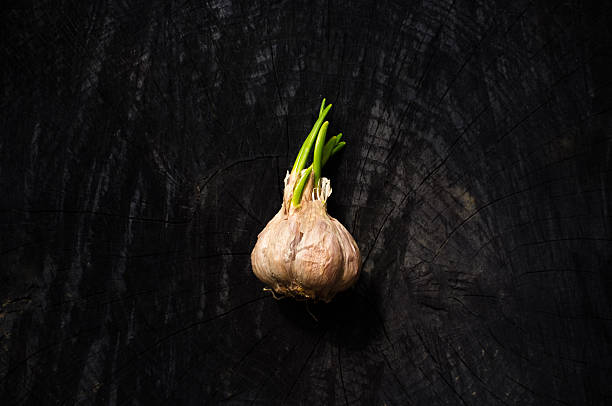Heart-Health Benefits of Sprouting Garlic

Getty Images
Don’t Get Rid of Sprouting Garlic
Allium sativum, better known as garlic, is one of the most highly cultivated crops, dating back centuries; a common spice commodity and species to the onion genus (plants including several or many different species), Allium- including but not limited to onions and leeks. The garlic bulb is the most commonly used portion of the plant, consisting of 8-20 cluster of cloves kept together by paper-thin outer layers, with a very distinctive flavor and aroma.
In recent times, it’s health benefits have been highlighted exceptionally (iron metabolism, lower cholesterol levels, and anti-bacterial and anti-viral benefits amongst others) with extensive research, but nothing in regards to a sprouting garlic bulb. The American Chemical Society has proven in a Journal of Agricultural and Food Chemistry that “garlic that has sprouted has more heart-healthy antioxidant activity than its younger counterparts.”
Such ground-breaking research has gone beyond the normal hypothesis and was certainly put to the test by Jong-Sang Kim and his team. Other studies have shown that similar food sources such as sprouted grains and beans have increased antioxidant activity, so the team set out to see if the results would be identical for garlic. Results concluded that seedlings that are germinated and grow into plants produce compounds that help fight pathogens during their growth cycle. Therefore, old garlic bulbs that begin sprouting in the first five days has shown to have similar attributes.
Extracts from this garlic (sprouted, of course), protected cells from damage after being placed in a laboratory dish. Garlic’s potential for disease prevention and treatment has antiquated roots for being a plant employed for the maintenance of health throughout many cultures (Egyptians, Greeks, Indians, Chinese just to name a few). With such legendary features, sprouted garlic bulbs should NEVER make it to your trash can again!
Journal Reference:
- Alexandra Zakarova, Ji Yeon Seo, Hyang Yeon Kim, Jeong Hwan Kim, Jung-Hye Shin, Kye Man Cho, Choong Hwan Lee, Jong-Sang Kim. Garlic Sprouting Is Associated with Increased Antioxidant Activity and Concomitant Changes in the Metabolite Profile. Journal of Agricultural and Food Chemistry, 2014; 62 (8): 1875 DOI:10.1021/jf500603v